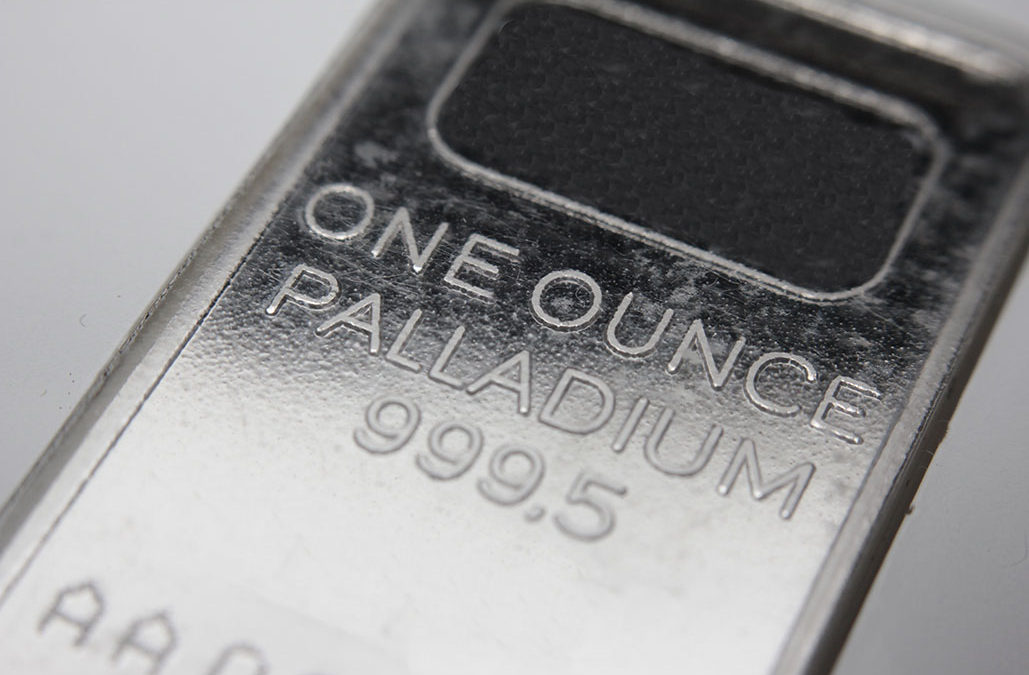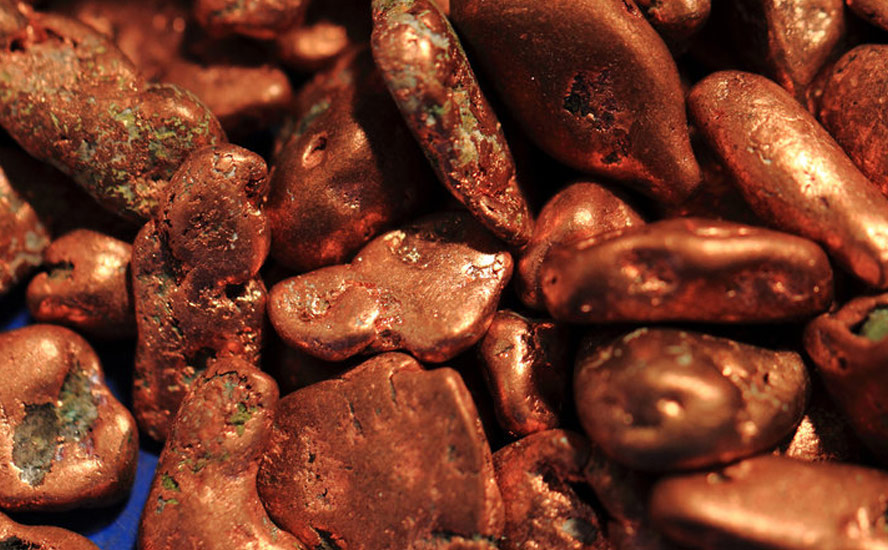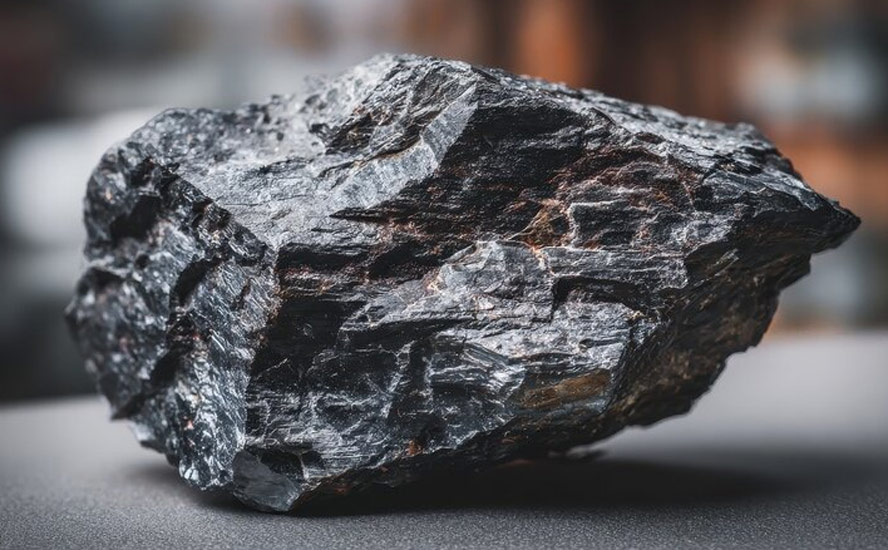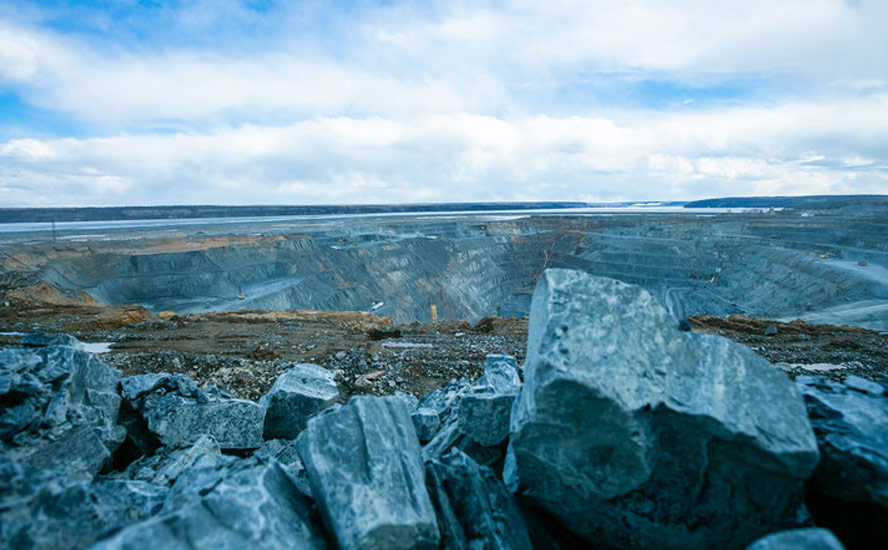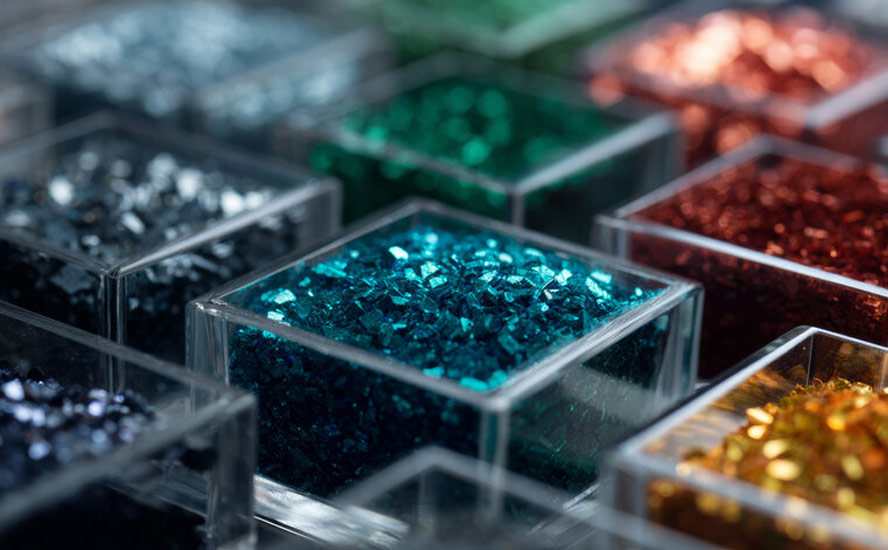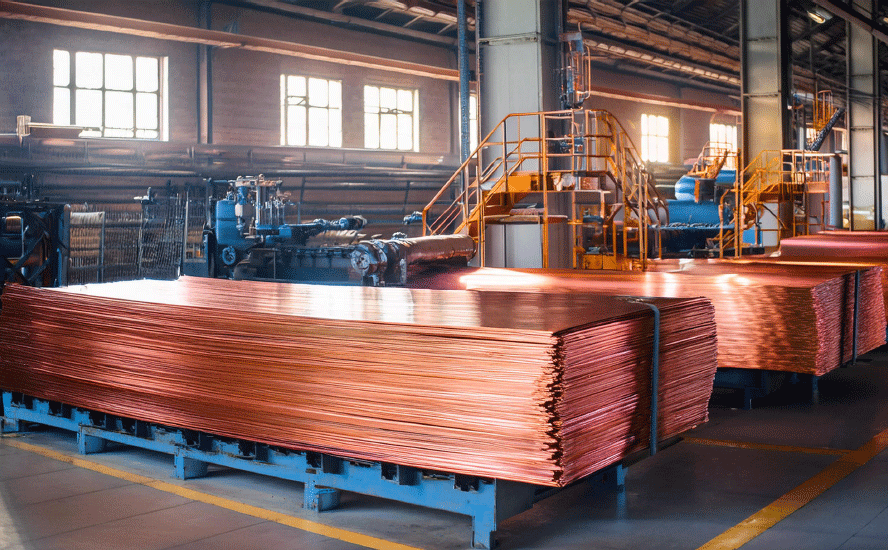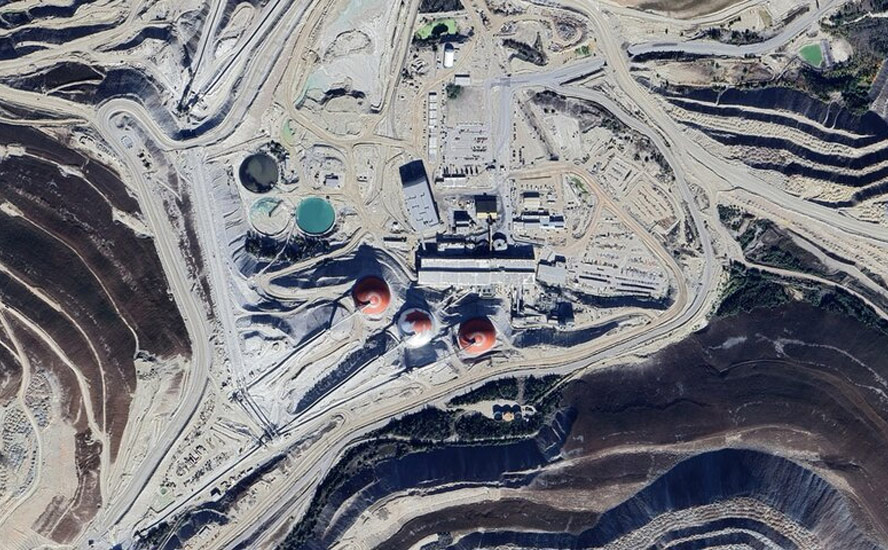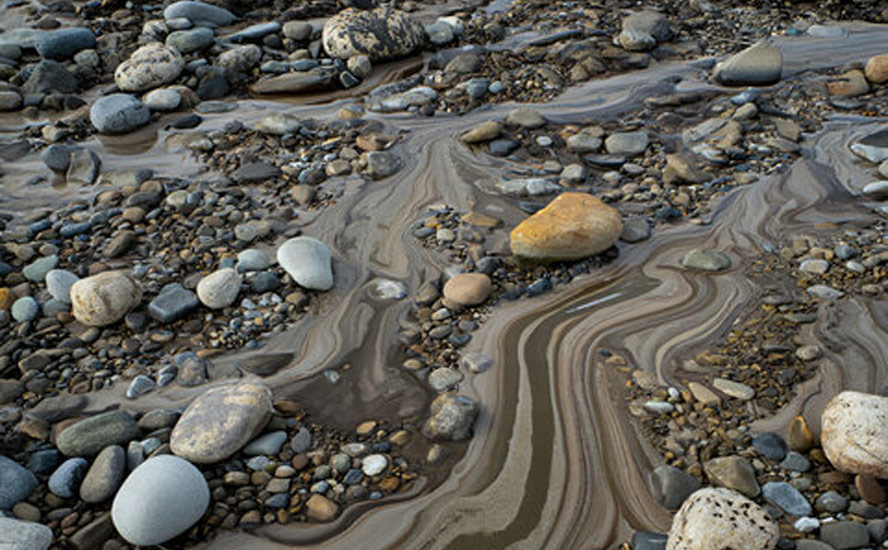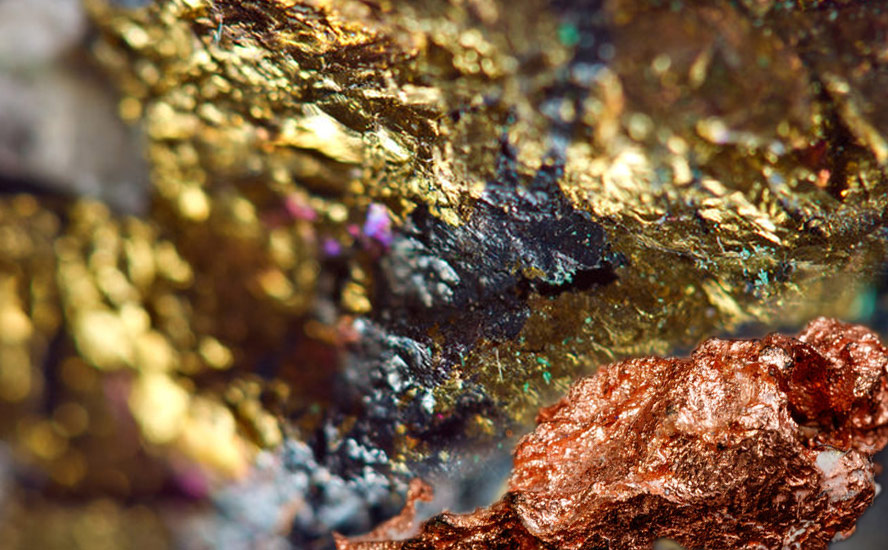Palladium One drills into $1,300 rock at Tyko nickel-copper-PGE project in Ontario
2021.06.21
Palladium One continues to outline a high-grade nickel system at its Tyko Ni-Cu-PGE project in Ontario, where a second-phase drill program started in April.
Notable for its high nickel tenor, Tyko is located in northwestern Ontario around 25 km north of the Hemlo mine (Barrick Gold) and 55 km from Generation Mining’s Marathon deposit, which hosts a measured and indicated resource of 3 million ounces palladium and 618 million pounds of copper.
The Archean-aged mafic-ultramafic intrusion is rich in nickel; Tyko’s ore contains twice as much nickel as copper, and equal amounts of platinum and palladium.
Tenors average 8.6% Ni, 4.6% Cu and 3.3 g/t PGE at the RJ zone, and 16.3% Ni, 8.7% Cu, and 12.8 g/t PGE at the Tyko zone, at 100% sulfides. According to Palladium One, the high tenor of the sulfide minerals suggests a valuable concentrate could be produced, and that even if the sulfides are disseminated, the deposit could still be economic.
Though previous operator Noranda did some historical exploration, the property remains under-explored, and un-mapped, even by the Geological Survey of Ontario.
The Tyko project covers over 20,000 hectares, including the 7,000 hectare mafic-ultramafic Bulldozer intrusion, which has seen virtually no geological mapping nor exploration.
A VTEM (Versatile Time Domain Electromagnetic) geophysical survey run by Noranda clipped the Smoke Lake target that is currently Palladium One’s focus at Tyko.
The 2020 drill program was designed to test the Smoke Lake electromagnetic (EM) anomaly.
EM surveys identified two near-surface, closely spaced conductors (or plates, described and pictured below), the largest of which had a strike length over 300m.
A drone-based magnetic survey also pinpointed a strong bullseye associated with soil anomalies (up to 565 ppm nickel and greater than 40 times background levels), representing the surface expression of the EM anomaly.
Mineralized boulders with high nickel (up to 0.41% Ni) and copper values were discovered, indicating potential for high-grade massive sulfide mineralization.
This potential was validated by the first two diamond drill holes, which intersected massive magmatic sulfides grading 8.7% nickel equivalent (Ni_Eq) (193 pounds per tonne) over 3.8 meters, and 4.8% Ni_Eq over 2.3m, both at less than 30m true depth.
This was the first confirmed occurrence of massive sulfides on the Tyko project.
A second-phase, 2,000m drill program started in April, following up on high-grade hits of 9.9% Ni_Eq over 3.8m – US$1,765.70 tonne at today’s price of US$8.09/lb and 6.3% Ni_Eq (US$1,123 tonne) over 0.9m, published on Jan. 19.
These are some of the highest nickel grades in the world.
The objective of the phase 2 drill program was to test the down-dip continuity of the two EM “plates” (an upper plate and a lower plate) that Palladium One modeled after the first-phase drill program in the fourth quarter of 2020.
On April 28 PDM announced that 11 of 14 holes completed so far intersected massive sulfides, ranging from 1.3 to 5.0 meters in length.
Assay results from the first six holes (TK21-029 to TK21-034) were delivered last week, with five holes pending.
According to Palladium One, the two most important results of the phase 2 program were, number one, to extend the strike length of the lower conductor to 350 meters, and number two, linking the high-grade massive sulfide mineralization between the upper and lower conductors.
Moreover, nickel continuity has been confirmed along the 350m strike length, with a number of high-grade intersections. These include:
- 6.0% Ni_Eq over 5.0m, and a higher-grade intercept of 9.5% Ni_Eq over 1.7m in hole 34;
- 9.0% Ni_Eq over 0.9m within 7.8% Ni-Eq over 3.1m in hole 29; and
- 7.0% Ni_Eq over 3.5m, including a higher-grade 7.7% Ni_Eq over 1.1m in hole 30.
At today’s metal prices, the widest 6.0% Ni_Eq intercept over 5.0m is worth $1,319.79 per tonne (total gross metal value in $USD), calculated using Kitco’s “Rocks in the Box” tool. For comparison, this is the dollar equivalent of a 23 g/t gold deposit, or a 50 ounce per tonne silver deposit. (28.3 grams in an ounce)
“Smoke Lake continues to deliver exceptional nickel grades. These results, notably hole TK21-034 indicate that the upper and lower plates are in fact one continuous sulphide lens. Additionally, evidence exists that the high-grade mineralization has been remobilized, thus seeking the source of mineralization is our top priority,” Palladium One’s President and CEO Derrick Weyrauch stated in the June 17 news release.
Drilling is expected to resume following the conclusion of the VTEM survey and the summer field program.

Smoke Lake plan map showing EM conductor Plates with 2020 and 2021 (blue traces) drill holes overlain on first vertical magnetics. Mineralized intersections for drill holes where assays are pending, are given as: MS=massive sulphide, SM=semi-massive, STR=stringer, DISS=Disseminated.

LK project
At Palladium One’s other active project, LK in Finland, phase 2 drilling at the Murtolampi zone intersected high-grade mineralization in hole LK20-026 of 13m at 3.4 g/t palladium equivalent (Pd_Eq US$315 per tonne) within 79m at 2.0 g/t (Pd_Eq US$185/ tonne).
The first results (seven holes) from a 2,000-meter drill program at the Haukiaho trend were announced on May 26, including 72m @ 1.8 g/t Pd_Eq at LK21-071 — one of 12 holes, or 1,943m, drilled at Haukiaho. According to PDM, the results from the first seven holes of the program are enough to build an NI 43-101-compliant resource estimate at Haukiaho, anticipated sometime in the third quarter. The five remaining holes, released on June 1, featured 8m @ 2.2 g/t Pd_Eq within a wider 116-meter zone grading 1.2 g/t Pd_Eq. Notably, the results filled in a 200-meter gap in the historical resource drilling, and delivered average grades and widths above those of the historical resource estimate.
“These latest results also extended the core Haukiaho zone to the east and into a second large IP anomaly that was delineated in 2020. This extension indicates substantial near-term upside at Haukiaho,” said Derrick Weyrauch, President and CEO. He added:
“At 17 kilometers in length, the Haukiaho trend currently represents the largest continuous patch of blue-sky potential on the LK property.”
At the Kaukua South target, drilling returned grades of 47m @ 2.6 g/t Pd_Eq, including a higher-grade core of 12m @ 4.2 g/t Pd_Eq – US$389/tonne. IP surveys have begun to expand the strike length by up to 3 km, from the current 4 km.
Assay results have been reported from 34 holes of 46, with the remaining 12 holes still to come. They feature 38m @ 2.1 g/t Pd_Eq in the Lower Zone at Kaukua South, announced on May 11. Drilling also expanded the strike length of the Upper zone having intersected robust mineralization of 51 meters @ 0.9 g/t Pd_Eq.
According to Palladium One, “drilling demonstrates significant continuity of open pit grades and widths in both the Upper and Lower Zones at Kaukua South. Results to date are highly encouraging and show a clear path toward a maiden open pit resource at Kaukua South.”

The LK property is part of an intrusive belt that runs east-west across Finland and into neighboring Russia. Palladium One in January secured a $12.5 million cash injection from Sprott Capital Partners. The bought deal financing (upsized to C$15M due to being over-subscribed) ensures a healthy treasury that PDM can draw from, as it continues to explore its projects in Canada and Finland. 27,000 meters is planned this year from a total exploration budget of $11.5 million.
Palladium One expects to complete resource drilling at the Kaukua South and Haukiaho zones, and to initiate drilling at eastern and western extensions of Kaukua South.
Conclusion
Palladium One is exploring for palladium and nickel at an opportune time for both metals.
As the world transitions from fossil fueled “ICEs” to battery-powered electric vehicles, gasoline vehicles and gas-electric hybrids will gradually displace more-polluting diesels, the former equipped with catalytic converters to filter out pollutants like NoX and particulate matter.
This means growing demand for materials that go into gas-powered autocatalysts, including palladium.
The platinum group metal is set for a supply squeeze for the 10th straight year. Driving palladium demand are higher sales of gasoline vs diesel units and tighter pollution controls.
Palladium use in hybrid vehicles, seen as a bridge between gas-powered cars and pure electrics, is a growing source of demand. The lustrous metal is also used in electronics, surgical instruments, jewelry, watch making, aircraft spark plugs, hydrogen purification and groundwater treatment.
Supply, meanwhile, is being challenged by production disruptions, for example flooding at Arctic mines.
On May 4 palladium hit a new record of $2,890/oz. Despite recent price weakness, over the past year, Pd is still up 38%.

Palladium One’s LK project is one of the few almost-pure palladium plays, meaning it stands to benefit greatly from continued palladium price strength. The company is making great progress at Kaukua South and Haukiaho, where a maiden resource is expected as early as the third quarter.
Producing nickel-rich battery cathodes requires high-purity nickel, in the form of nickel sulfate, derived from high-grade nickel sulfide deposits.
However, there is a problem, in that the majority of today’s nickel production is nickel pig iron (NPI) used in steelmaking (also known as ferro-nickel), which is ill-suited for making battery-grade nickel.
Historically, most nickel was produced from sulfide ores, including the giant (>10 million tonnes) Sudbury deposits in Ontario, Canada, Norilsk in Russia and the Bushveld Complex in South Africa. However, existing sulfide mines are becoming depleted, and nickel miners are having to go to the lower-quality, but more expensive to process, as well as more polluting, nickel laterites such as found in the Philippines, Indonesia and New Caledonia.
Mining companies in that part of the world are being called out for dumping their tailings into the sea and pumping out high greenhouse gas emissions from their nickel refineries. Automakers are increasingly distancing themselves from “dirty” Indonesian nickel.
Indeed, mining nickel from laterites and turning it into battery-grade nickel using the highly polluting HPAL method, or worse, processing nickel matte as China’s Tsingshan Group plans to do, is no match for a rare, and valuable, nickel sulfate deposit such as Palladium One’s Tyko, in a mining-friendly jurisdiction like Ontario.
The company has been getting spectacular results at its Canadian nickel project, reporting massive sulfide intersections in multiple holes. Upcoming shareholder catalysts include more assay results and the resumption of drilling.
Palladium One
TSXV:PDM, OTC:NKORF, FSE:7N11
Cdn$0.28 2021.06.21
Shares Outstanding 248m
Market cap Cdn$67.9m
PDM website
Richard (Rick) Mills
aheadoftheherd.com
subscribe to my free newsletter
Legal Notice / Disclaimer
Ahead of the Herd newsletter, aheadoftheherd.com, hereafter known as AOTH.
Please read the entire Disclaimer carefully before you use this website or read the newsletter. If you do not agree to all the AOTH/Richard Mills Disclaimer, do not access/read this website/newsletter/article, or any of its pages. By reading/using this AOTH/Richard Mills website/newsletter/article, and whether you actually read this Disclaimer, you are deemed to have accepted it.
Any AOTH/Richard Mills document is not, and should not be, construed as an offer to sell or the solicitation of an offer to purchase or subscribe for any investment.
AOTH/Richard Mills has based this document on information obtained from sources he believes to be reliable, but which has not been independently verified.
AOTH/Richard Mills makes no guarantee, representation or warranty and accepts no responsibility or liability as to its accuracy or completeness.
Expressions of opinion are those of AOTH/Richard Mills only and are subject to change without notice.
AOTH/Richard Mills assumes no warranty, liability or guarantee for the current relevance, correctness or completeness of any information provided within this Report and will not be held liable for the consequence of reliance upon any opinion or statement contained herein or any omission.
Furthermore, AOTH/Richard Mills assumes no liability for any direct or indirect loss or damage for lost profit, which you may incur as a result of the use and existence of the information provided within this AOTH/Richard Mills Report.
You agree that by reading AOTH/Richard Mills articles, you are acting at your OWN RISK. In no event should AOTH/Richard Mills liable for any direct or indirect trading losses caused by any information contained in AOTH/Richard Mills articles. Information in AOTH/Richard Mills articles is not an offer to sell or a solicitation of an offer to buy any security. AOTH/Richard Mills is not suggesting the transacting of any financial instruments.
Our publications are not a recommendation to buy or sell a security – no information posted on this site is to be considered investment advice or a recommendation to do anything involving finance or money aside from performing your own due diligence and consulting with your personal registered broker/financial advisor.
AOTH/Richard Mills recommends that before investing in any securities, you consult with a professional financial planner or advisor, and that you should conduct a complete and independent investigation before investing in any security after prudent consideration of all pertinent risks. Ahead of the Herd is not a registered broker, dealer, analyst, or advisor. We hold no investment licenses and may not sell, offer to sell, or offer to buy any security.
Richard does not own shares of Palladium One. (TSX.V:PDM). PDN is a paid advertiser on his site aheadoftheherd.com
Legal Notice / Disclaimer
Ahead of the Herd newsletter, aheadoftheherd.com, hereafter known as AOTH.Please read the entire Disclaimer carefully before you use this website or read the newsletter. If you do not agree to all the AOTH/Richard Mills Disclaimer, do not access/read this website/newsletter/article, or any of its pages. By reading/using this AOTH/Richard Mills website/newsletter/article, and whether you actually read this Disclaimer, you are deemed to have accepted it.

